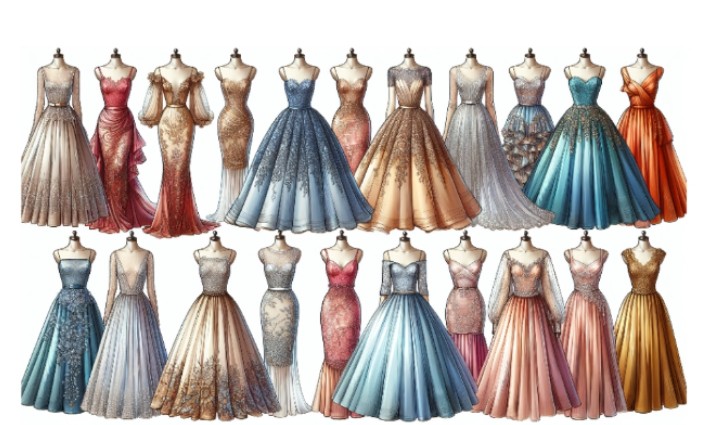In the fast-paced furniture sector, 3D furniture visualization has become the cornerstone of success for companies aiming to stand out. By utilizing 3D creation services, furniture brands can elevate their market presence, boost competitiveness, and ultimately increase sales. In an industry where presentation is key, the ability to showcase products in their full glory through immersive and interactive 3D experiences is a game-changer.
For retailers, 3D furniture visualization offers a powerful tool to enhance product displays, helping to drive traffic, improve brand exposure, and increase sales conversion rates. As the digital landscape continues to evolve, leveraging cutting-edge technology like 3D rendering is no longer just an option—it’s a necessity for businesses looking to stay ahead. Failing to adopt this technology risks poor product presentation, missed opportunities, and ultimately, loss of potential customers.
3D furniture visualization is a visual marketing tool that allows furniture companies to present their products in an interactive, realistic manner. Unlike traditional 2D images, 3D visualization provides a dynamic, multi-angle view of a product, giving customers an immersive experience. Consumers can explore a piece of furniture from every angle, zoom in to examine details, and even customize elements like color and fabric.
This technology works by creating digital models of furniture items, allowing customers to view products as if they were physically present in the room. In a world where the majority of customer interactions happen online, the ability to explore products in 3D brings a tactile experience to the digital marketplace. Furniture brands that adopt this technology can offer their customers a more engaging and informative shopping experience, making it easier for them to visualize products in their homes or offices, and ultimately leading to higher conversion rates.
The Advantages of 3D Furniture Visualization for Retailers
1. Reducing Costs and Errors
One of the key benefits of 3D furniture visualization is its ability to save costs while minimizing errors. Traditional product development often requires the creation of multiple physical prototypes, which can be time-consuming and expensive. By contrast, 3D rendering allows designers to create virtual prototypes that can be modified and reviewed without the need for physical materials.
For example, 3D visualization helps manufacturers:
- Build and test prototypes virtually, eliminating the need for physical models.
- Spot and fix design errors early in the development process, reducing the likelihood of costly mistakes during production.
- Save on raw materials by reducing the number of prototypes needed.
- Streamline the production process by ensuring better design accuracy and fewer iterations.
By reducing manual labor and the cost of materials, 3D visualization leads to a more efficient production cycle. The ability to test designs digitally means fewer wasted resources and lower labor costs, contributing to higher profit margins over time.
2. Enhancing Design Flexibility
For retailers, being able to modify furniture designs on the fly is a significant advantage. With 3D visualization, brands can make last-minute changes to a product’s dimensions, colors, or materials without going through the cumbersome process of altering physical prototypes. This flexibility allows for faster turnarounds and more agile decision-making.
Moreover, customers can see what a product will look like under various lighting conditions, from different angles, and in multiple contexts. With the help of a product configurator, they can also customize features, adjusting elements like color, material, or size to suit their preferences. Whether it’s a cozy living room setup or a modern office environment, 3D furniture visualization allows customers to picture the furniture in their own space, making it easier for them to commit to a purchase.
3. Testing and Experimenting with Design Concepts
The creative freedom offered by 3D furniture visualization is unmatched. Retailers can experiment with a wide range of design elements — such as color schemes, fabrics, and textures—without the need for physical prototypes. This ability to test and explore different design ideas allows brands to fine-tune their offerings and ensure they’re bringing the best products to market.
For instance, retailers can use 3D models to showcase various iterations of a product, allowing customers to choose between multiple design options. This not only enhances the shopping experience but also ensures that customers are more satisfied with their final purchase, leading to fewer returns and a stronger brand reputation.
4. Building Customer Trust and Brand Credibility
In an increasingly competitive market, building trust with customers is essential for success. 3D furniture visualization helps achieve this by providing an authentic and interactive product experience. By giving customers the ability to explore products in detail, retailers can alleviate concerns about the quality or suitability of a piece of furniture.
For B2B sales, 3D rendering can be particularly useful when presenting products to retailers and distributors. It enables manufacturers to display their products in a visually compelling manner, helping to build stronger relationships with business partners and increase sales through distribution channels.
The ability to offer customers a high-quality, virtual preview of a product adds an extra layer of transparency, ultimately boosting brand credibility and enhancing customer satisfaction.
5. Attracting More Customers with Engaging Visuals
From a marketing perspective, 3D furniture visualization opens up new possibilities for creating visually stunning content that can attract and engage customers. High-resolution 3D images can be used across a variety of marketing channels, including e-commerce websites, social media platforms, and print catalogs.
Unlike traditional product photography, 3D rendering allows retailers to showcase a product in various settings, styles, and configurations without the need for expensive photoshoots. Retailers can produce captivating visuals that not only grab attention but also provide detailed, accurate representations of their products. This is particularly beneficial for e-commerce, where compelling visuals are crucial for driving traffic and conversions.
6. Gaining a Competitive Edge with 3D Visualization
The furniture industry is highly competitive, and staying ahead of the competition is essential for long-term success. Many brands still rely on traditional 2D images for product presentation, which means that adopting 3D visualization gives you a significant advantage. By offering a more immersive and engaging shopping experience, you can differentiate your brand from competitors and appeal to a broader audience.
3D furniture visualization also offers diverse visual options such as 360-degree views, animations, and augmented reality (AR) features. These tools allow customers to visualize products in their own homes using their smartphones, further enhancing the shopping experience and increasing the likelihood of a purchase.
Conclusion
As technology continues to evolve, 3D furniture visualization is becoming an indispensable tool for retailers. It offers numerous advantages, from reducing costs and increasing design flexibility to building customer trust and boosting brand credibility. For furniture companies looking to stay competitive and drive growth, adopting 3D visualization is a crucial step forward.
By embracing 3D visualization, retailers can not only enhance their product presentation but also deliver a superior customer experience, leading to higher sales, increased customer loyalty, and a stronger market position.






